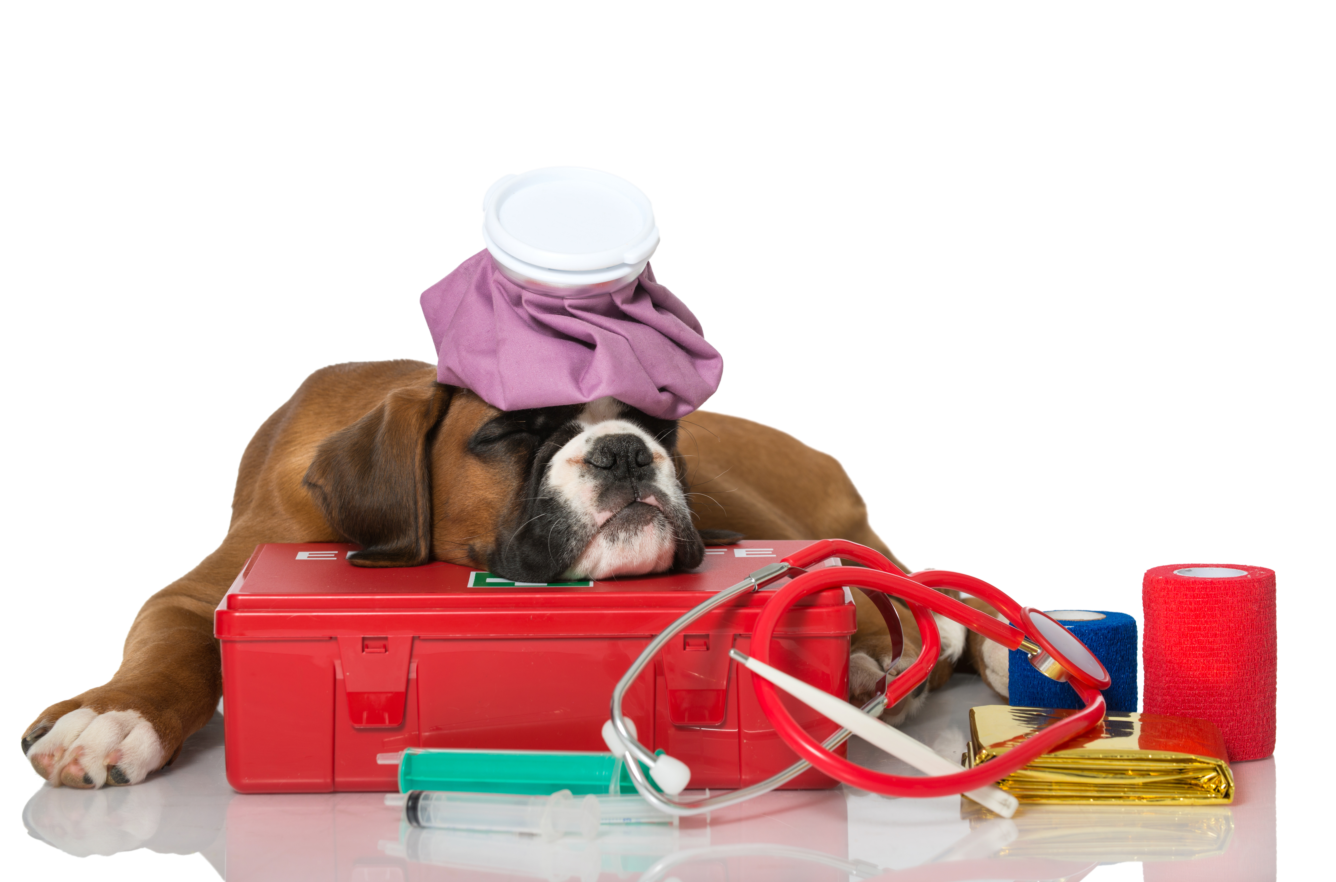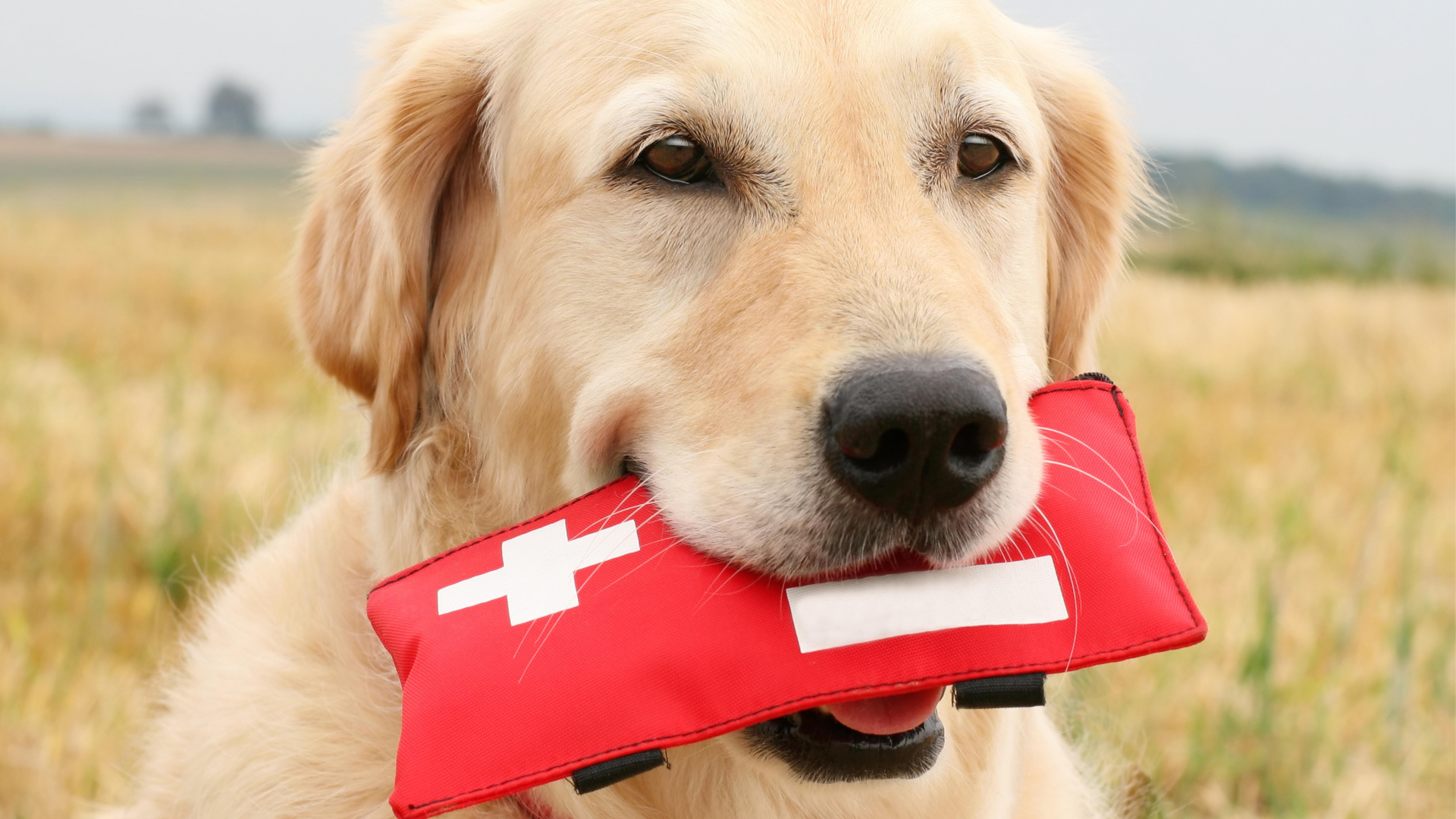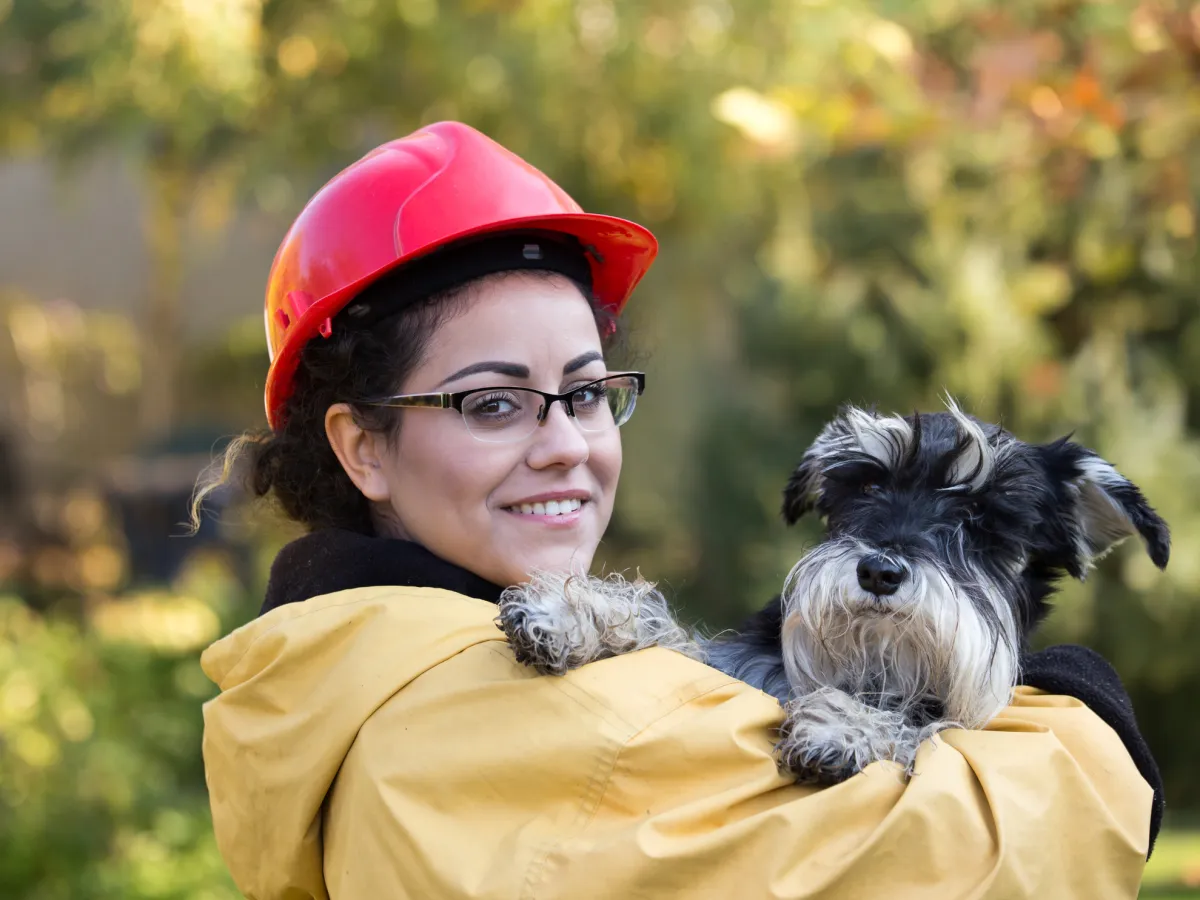Urban areas can be unpredictable, with emergencies occurring unexpectedly. As a dog owner, it is important to be prepared for any situation that may arise. Whether it's a natural disaster, a power outage, or a medical emergency, having a plan in place can make all the difference in keeping your furry friend safe.

One of the first steps in emergency preparedness is to create a kit that includes essential items for your dog. This may include food, water, medications, a first aid kit, and copies of important documents such as vaccination records. It is also important to have a sturdy leash and collar on hand, as well as a crate or carrier for transportation. In addition, it is recommended to have a recent photo of your dog in case they become lost during an emergency.
Another important aspect of emergency preparedness is to have a plan in place for evacuation. This may involve identifying safe places to go in case of a natural disaster, such as a designated pet-friendly shelter or a friend's home outside of the affected area. It is important to practice evacuation drills with your dog to ensure a smooth and safe transition in case of an emergency. By being proactive and prepared, dog owners in urban areas can help ensure the safety and well-being of their furry companions in any situation.
Understanding Urban Emergencies

Types of Urban Emergencies
Urban areas are prone to a wide range of emergencies, which can be classified into natural and man-made disasters. Natural disasters such as earthquakes, hurricanes, and floods can occur unexpectedly and cause significant damage to property and loss of life. Man-made disasters such as terrorist attacks, fires, and power outages can also occur in urban areas, and they can be just as devastating.
Unique Challenges for Dog Owners
Dog owners in urban areas face unique challenges during emergencies. They must prepare for emergencies that can occur at any time and be ready to evacuate with their pets at a moment's notice. In addition, they must be aware of the potential dangers that their pets may face during an emergency, such as exposure to hazardous materials or being separated from their owners.
To prepare for emergencies, dog owners should have a plan in place that includes a designated meeting place, a supply of food and water, and a means of transportation. They should also ensure that their pets are up-to-date on vaccinations and have identification tags with current contact information.
Overall, understanding the types of emergencies that can occur in urban areas and the unique challenges that dog owners face is crucial for effective emergency preparedness. By taking the necessary precautions and having a plan in place, dog owners can ensure the safety and well-being of their pets during emergencies.
Preparation Basics
Preparing for an emergency is essential for all dog owners, especially those living in urban areas. The following subsections provide some basic steps to help dog owners prepare for emergencies.
Emergency Kits for Dogs
Having an emergency kit for your dog is crucial in case of an emergency. The kit should contain the following items:
- At least three days' worth of food and water
- Medications and medical records
- First aid kit
- Leash, collar, and ID tags
- Recent photos of your dog
- Comfort items such as toys and blankets
- Any necessary supplies for your dog's specific needs (e.g., diapers, litter, etc.)
It is essential to keep the emergency kit in a readily accessible location and ensure that it is regularly updated.
Evacuation Plans
In the event of an emergency, it is crucial to have a plan in place for evacuating your dog. This plan should include the following:
- Identify safe evacuation routes and shelters in your area that allow pets.
- Have a designated caregiver who can take care of your dog if you are unable to do so.
- Keep a list of emergency contacts, including your veterinarian's contact information.
- Practice evacuating with your dog to help them become familiar with the process.
Training Your Dog for Emergencies
Training your dog for emergencies can be beneficial for both you and your pet. Some basic training includes:
- Teaching your dog to come when called.
- Getting your dog used to being in a crate or carrier.
- Exposing your dog to different environments and situations to help them remain calm during an emergency.
Overall, it is essential to be prepared for emergencies to ensure the safety of both yourself and your dog. By following these basic steps, dog owners can be better equipped to handle unexpected situations.
Sheltering in Place
Indoor Safety
During an emergency, it may be necessary for dog owners to shelter in place. This means staying inside their homes or apartments until it is safe to leave. To ensure the safety of both the dog and the owner, it is important to take certain precautions.
First, it is recommended to identify a safe room in the home where the dog can be kept. This room should be free of hazards, such as sharp objects or toxic substances, and should be easily accessible in case of an emergency. If possible, the room should have access to fresh air and natural light.
Second, it is important to secure any loose items in the home that could become projectiles during a disaster. This includes items such as furniture, lamps, and electronics. Covering windows with plywood or heavy-duty shutters can also help protect against flying debris.
Lastly, it is important to have a supply of food, water, and medication for both the dog and the owner. It is recommended to have at least a three-day supply of these items on hand in case of an emergency.
Managing Stress and Anxiety in Dogs

During an emergency, dogs may become stressed and anxious. This can manifest in a variety of ways, such as barking, whining, pacing, or hiding. To help manage stress and anxiety in dogs during a shelter-in-place situation, there are a few things that owners can do.
First, it is important to maintain a sense of routine as much as possible. This includes feeding and exercising the dog at regular times, and providing them with familiar toys or blankets.
Second, owners can try to create a calm and soothing environment for their dog. This can be done by playing soft music, using calming scents such as lavender, or providing a comfortable and quiet space for the dog to rest.
Lastly, owners can consider using natural remedies such as CBD oil or herbal supplements to help manage their dog's stress and anxiety. However, it is important to consult with a veterinarian before using any new treatments.
Evacuation Procedures
Transportation Methods
When evacuating an urban area during an emergency, it is important to have a plan in place for transporting your dog. If you have a car, make sure it is in good condition and has a full tank of gas. If you do not have a car, consider public transportation or arranging a ride with a friend or family member. It is important to have a backup plan in case your first option falls through.
Identifying Pet-Friendly Shelters
Not all emergency shelters will accept pets, so it is important to identify pet-friendly shelters in advance. Contact your local emergency management office or animal control agency to find out which shelters in your area will accept pets. Keep a list of these shelters and their contact information in your emergency kit.
When evacuating to a pet-friendly shelter, make sure to bring your dog's identification, vaccination records, and any necessary medications. It is also important to bring enough food, water, and supplies for your dog to last at least a few days.
By having a transportation plan and identifying pet-friendly shelters in advance, you can ensure that you and your dog are prepared for an emergency evacuation in an urban area.
First Aid and Dog Health
Canine First Aid Kit Essentials
As a responsible dog owner in an urban area, it is important to have a well-stocked first aid kit for your furry friend. Here are some essentials to include in your canine first aid kit:
- Gauze pads and rolls
- Adhesive tape
- Scissors
- Tweezers
- Antiseptic wipes
- Thermometer
- Hydrogen peroxide
- Cotton balls
- Disposable gloves
- Muzzle
It is important to note that not all human first aid supplies are safe for dogs. For example, ibuprofen and acetaminophen are toxic to dogs and should not be included in their first aid kit.

Recognizing Emergency Signs in Dogs
In the event of an emergency, it is crucial to be able to recognize signs of distress in your dog. Here are some common emergency signs to look out for:
- Difficulty breathing
- Excessive bleeding
- Seizures
- Unconsciousness
- Swollen abdomen
- Vomiting or diarrhea
- Pale gums
- Inability to stand or walk
If you notice any of these signs, it is important to seek veterinary care immediately. Delaying treatment can lead to serious consequences or even death.
By being prepared with a well-stocked first aid kit and knowing how to recognize emergency signs in your dog, you can help ensure their safety and well-being in any situation.
Community Support and Resources
Local Emergency Services
In the event of an emergency, it is important to know the local emergency services available in your area. Dog owners should familiarize themselves with the nearest animal hospitals, clinics, and emergency shelters that can accommodate pets. It is also important to know the contact information for local animal control services and the police department.
Networking with Other Dog Owners
Networking with other dog owners in your community can be a valuable resource in times of emergency. Consider joining local dog owner groups or social media groups to stay informed about emergency situations in your area. It is also helpful to have a list of trusted neighbors or friends who can assist with pet care in the event of an emergency.
Dog owners can also consider creating a neighborhood emergency plan that includes designated meeting places and communication methods. This can help ensure that everyone in the community, including pets, are accounted for and safe during an emergency.

Post-Emergency Recovery
After an emergency, it is important for dog owners to focus on their pet's recovery. This involves assessing the dog's health and re-establishing a routine to help them return to normalcy.
Assessing Your Dog's Health Post-Emergency
The first step in assessing your dog's health post-emergency is to check for any injuries or illnesses. Look for cuts, scrapes, or any other visible signs of injury. If you notice any, seek veterinary care immediately.
In addition to physical injuries, dogs may also experience emotional distress after an emergency. Signs of distress may include lethargy, loss of appetite, or excessive barking. If you notice any of these signs, try to provide comfort and reassurance to your pet.
It is also important to monitor your dog's behavior and overall health in the days and weeks following the emergency. Keep an eye out for any changes in behavior, such as aggression or anxiety, and seek professional help if necessary.
Re-establishing Routine
After an emergency, it may take some time for your dog to adjust to a new routine. However, it is important to establish a consistent schedule as soon as possible. This can help your dog feel more secure and reduce stress.
Start by establishing a regular feeding and exercise routine. Stick to the same times each day and try to keep the routine as consistent as possible. You may also want to consider providing your dog with a safe space, such as a crate or designated area, where they can go to feel secure.
In addition to establishing a routine, it is important to provide your dog with plenty of love and attention. Spend time playing with them and engaging in activities they enjoy. This can help reduce stress and promote overall well-being.
Overall, post-emergency recovery for dogs requires patience, attention, and care. By assessing your dog's health and establishing a routine, you can help them return to normalcy and promote their overall well-being.
Conclusion

In conclusion, urban dog owners must prioritize emergency preparedness to ensure the safety and well-being of their dogs during unforeseen circumstances. By following these guidelines, you can enhance your ability to protect and care for your furry friend in times of crisis.
FAQs
- Q1: How often should I update my pet's emergency kit?
- A1: It's recommended to review and update your pet's emergency kit every six months.
- Q2: Should I include toys in my dog's emergency supplies?
- A2: Yes, including familiar toys can help comfort your dog during stressful situations.
- Q3: What if my dog requires special medications?
- A3: Ensure you have a sufficient supply of any required medications and keep them in a waterproof container.
- Q4: How can I help my dog become more comfortable with crate training?
- A4: Gradually introduce your dog to the crate using positive reinforcement techniques.
- Q5: Can I involve my neighbors in our emergency plan?
- A5: Yes, involving neighbors can be beneficial, especially if they are also pet owners.




